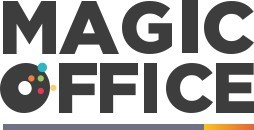
The Art of Communication: A Cornerstone for Office Management
Foundational Communication Skills for Office Managers
Effective communication is more than just exchanging information; it’s about understanding the underlying emotions and intentions behind the information. As an office manager, your ability to convey clear messages, listen actively, and respond appropriately is vital to fostering a productive and harmonious work environment. By mastering these foundational communication skills, you pave the way for better project collaboration, conflict resolution, and overall office harmony.
Fostering a Culture of Open Dialogue
Creating an open and inclusive atmosphere is a key responsibility of office management. Encouraging your team to share thoughts and ideas, and valuing their inputs, can lead to greater innovation and efficiency. Initiatives like regular team meetings, suggestion boxes, and open-door policies contribute significantly to a culture where every voice is heard, and continuous improvement is the norm. Such strategies reinforce the importance of transparent communication as the linchpin for a dynamic office environment.
Emphasizing Clarity and Conciseness
In the realm of office management, the ability to communicate with clarity and brevity cannot be overstated. Complicated jargon or long-winded explanations can lead to misunderstandings and inefficiency. Consider employing easy-to-understand language and breaking down complex instructions into manageable steps. By providing crystal-clear directions and expectations, you minimize confusion and empower your team to execute their tasks with greater confidence and autonomy.
Active Listening: A Skill That Speaks Volumes
Listening is half of the communication battle, especially in office management. Active listening involves giving your full attention, understanding the message, asking clarifying questions, and providing feedback. It's a way to show respect for your colleagues’ contributions and to ensure you've captured the essence of their messages. It also plays a crucial role in identifying and mitigating issues before they escalate, solidifying your standing as a thoughtful and proactive leader.
Decoding Verbal and Non-Verbal Interactions in the Workplace
Decoding Verbal and Non-Verbal Interactions in the Workplace
In the bustling environment of a Canadian office, understanding the nuances of both verbal and non-verbal communication is crucial for successful office management. Effective communication is not just about what is spoken. A significant portion of our day-to-day interactions involve the silent cues that speak volumes about intentions, emotions, and responses.
Understanding Verbal Nuances
Beyond the mere words, the tone, pitch, and speed of verbal exchanges play a transformative role in conveying meaning. Astute office managers can detect the undercurrents of a conversation by paying attention to these subtleties. For instance, a team member's hesitant tone when discussing project deadlines may indicate a need for support, which, if addressed promptly, can prevent missed targets and ensure seamless project management.
Reading Non-Verbal Signals
Non-verbal communication, encompassing body language, facial expressions, and gestures, can sometimes contradict the spoken word, unveiling deeper truths. It's essential for those in office management to develop a keen eye for such cues. A simple crossed-arm posture from an employee might signal resistance or discomfort, prompting a proactive approach to understanding and alleviating any concerns.
Statistics reveal that non-verbal cues can represent up to 55% of how we communicate. Hence, integrating this awareness into office management strategies is more than a soft skill; it's a competitive edge in fostering a harmonious and productive workplace.
Improving Workplace Relationships with Body Language Awareness
By consciously applying knowledge of body language, office managers can profoundly improve interpersonal relationships within the team. Reflecting open and approachable body language can set a tone of trust and collaboration that echoes throughout an office's culture.
Fostering a culture of open communication, where verbal and non-verbal cues are equally respected, encourages a more inclusive and effective workplace. Office managers can facilitate this culture, ensuring that all team members feel heard and understood. Effective communication – understanding the unsaid as well as the articulated – is key to emotional intelligence, which serves as a powerful pillar for leadership within office management.
Moreover, equipping staff with communication training can help in sharpening these interpretive skills, enabling better teamwork and reducing conflicts. This includes setting aside time to learn about colleagues' communication styles and preferences, which not only promotes effective communication but also enhances team dynamics.
Navigating Communication Styles
Diverse office settings present a mosaic of communication styles. By understanding these differences, office managers can tailor their interactions to be more impactful, acknowledging that one communication approach does not fit all. Adjusting communication methods according to the audience ensures clarity and strengthens the message being conveyed.
In conclusion, effective office management hinges on the deep understanding of both verbal and non-verbal communications. By mastering these aspects, office managers can elevate their leadership capabilities, ensuring their team collaborates in a way that is productive, clear, and harmonious.
Leveraging Technology to Enhance Team Communication
Embracing Digital Tools for Optimized Communication
In today's fast-paced office environments, leveraging technology is integral to streamlining communication. Digital communication platforms like Slack, Zoom, and Microsoft Teams have revolutionized the way office managers facilitate interactions within their teams. These tools help bridge the gap between different departments, allow for real-time collaboration, and create a paperless environment that enhances organizational efficiency. Furthermore, they provide a structured way for office managers to oversee projects, track progress, and manage tasks with ease.
Enhancing Remote Work with Virtual Communication
The rise of remote work has necessitated the adoption of virtual communication tools. For office managers, it is crucial to ensure that team members are just as connected from their home offices as they would be in a physical office setting. Virtual meeting spaces like video conferencing enable face-to-face interactions that are vital for maintaining team rapport. Additionally, these platforms often come with features like screen sharing and virtual whiteboards, which are ideal for brainstorming sessions and fostering a collaborative work environment.
Streamlining Workflows with Communication Apps
An effective office manager recognizes the value of streamlined workflows, and communication applications play a pivotal role in achieving this. Tools that offer integrated task management, such as Asana or Trello, allow team members to see the big picture of project timelines, dependencies, and individual responsibilities. This not only improves transparency within the team but also enhances accountability and can lead to a significant increase in productivity.
Collaborative Communication with Shared Document Platforms
When it comes to collaborative work, shared document platforms such as Google Workspace and Microsoft 365 are indispensable. They allow multiple users to work on a single document simultaneously, making the process of document creation, editing, and review far more dynamic and efficient. As an office manager, encouraging the use of these platforms can foster a culture of collaboration and ensure that team members are always on the same page, literally and figuratively.
The Analytics Edge: Using Data to Inform Communication Strategies
Office management today is just as much about interpreting data as it is about managing people. Advanced analytics tools integrated into communication platforms can provide valuable insights into team interactions, project status updates, and overall communication effectiveness. By analyzing this data, office managers can identify patterns and bottlenecks, tailor their communication strategies, and make informed decisions to improve team performance incrementally.
Communication as a Leadership Tool: Inspiring and Motivating Teams
The Power of Communication in Leadership
Effective communication is not merely an administrative tool; it is the lifeblood of strong leadership. An office manager who can clearly articulate visions, goals, and expectations is more likely to galvanize their team towards productivity and success. It's the ability to convey messages that resonate with team members on an individual level, aligning them with the company's direction and fostering a shared sense of purpose.
Inspiring Through Words and Actions
Leaders who communicate with confidence and clarity do not only issue commands; they inspire. When an office manager uses communication to motivate staff, they create an environment where employees feel valued and understood. Sharing success stories and giving constructive feedback are powerful ways to boost morale and encourage continuous improvement.
Crafting Messages to Motivate
The choice of words, the tone, the timing – all these factors play a crucial role in how a message is received. Office managers must craft their messages with intent to motivate their teams. Whether it's through regular team meetings, one-on-one sessions, or written communications, the message should be crafted to be engaging, inspirational, and energizing, prompting action and commitment.
Nurturing a Culture of Open Dialogue
Empowering staff to voice their ideas and concerns is another critical aspect of communication in leadership. An office environment that encourages open dialogue is conducive to innovation and problem-solving. When team members feel their input is genuinely considered, they are more invested in their work and the success of the office as a whole.
Communication Techniques That Lead to Success
Strategic use of communication techniques can significantly impact how a team performs. Effective office managers use active listening, emotional intelligence, and appropriate body language to influence and lead their teams. Recognizing the individual communication styles and adapting the approach to each team member can also markedly improve the efficacy of interpersonal interactions.
Overcoming Communication Barriers in Diverse Office Settings
Embracing Diversity for Smoother Office Communications
In an era where workplaces are becoming increasingly multicultural, office managers must be adept at navigating the complexities of diversity. Communication barriers can arise from differences in language, cultural norms, or even various communication styles. To address this, it is essential to cultivate an environment of openness and inclusivity. Initiatives for cultural competence training can go a long way in sensitizing team members to the nuances of cross-cultural communication. By fostering an understanding of diverse perspectives, office managers lay the groundwork for an accepting work culture that thrives on collaboration.
Strategies for Effective Multilingual Communication
Language differences can pose significant challenges in a multilingual workplace. Office managers can leverage this diversity as a strength by implementing language learning sessions or using translation tools to bridge gaps. Encouraging the use of clear, simple language and maintaining visual aids or written documentation can assist individuals in better understanding and retaining information. These strategies ensure that language barriers do not impede the flow of communication and that all team members feel valued and understood.
Solution-driven Approaches to Technical Jargon and Industry Speak
Every industry has its lingo, which can be confusing, especially for new employees or those from different professional backgrounds. It's important for office managers to simplify communication by minimizing jargon or clearly explaining it when used. Including glossaries in training material, holding informative workshops, and encouraging questions can demystify industry-specific terminology, enabling clearer communication and understanding among all team members.
Building a Foundation for Open Dialogue
Effective communication is not just about overcoming language and cultural barriers; it's also about building trust and openness. Office managers can facilitate this by promoting policies that encourage open dialogue, such as regular feedback sessions and open-door policies. Encouraging team members to voice concerns and ideas creates a supportive atmosphere that can identify and address communication issues quickly. This, in turn, leads to improved productivity and a more harmonious office environment.
Adapting to Different Communication Styles
Understanding that each individual may have a preferred style of communication, whether it be visual, auditory, or kinesthetic, can help office managers tailor their approach. Utilizing a mix of communication methods, such as presentations, written emails, and hands-on demonstrations, can cater to these varied styles. By being versatile in communication tactics, office managers pave the way for messages to be conveyed effectively, ensuring that all team members are on the same page.
Implementing Technological Solutions to Bridge Gaps
With the advancements in communication technology, office managers have a plethora of tools at their disposal to overcome barriers. Project management software, communication platforms, and collaborative tools can facilitate real-time interaction and information sharing across different locations and time zones. It's crucial to choose the right technology that complements the team's needs, offering training when necessary. These technological solutions empower teams to work cohesively, despite any communication hurdles they might face in the office environment.

